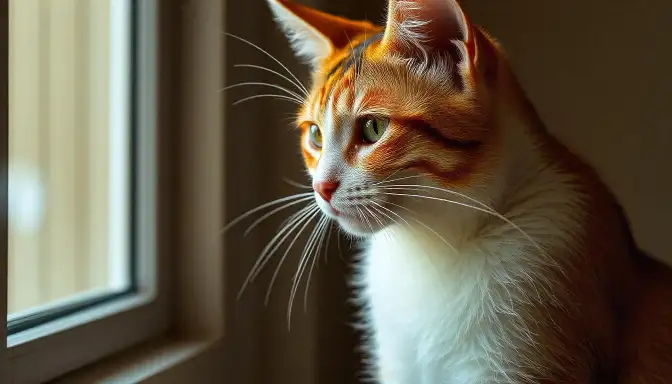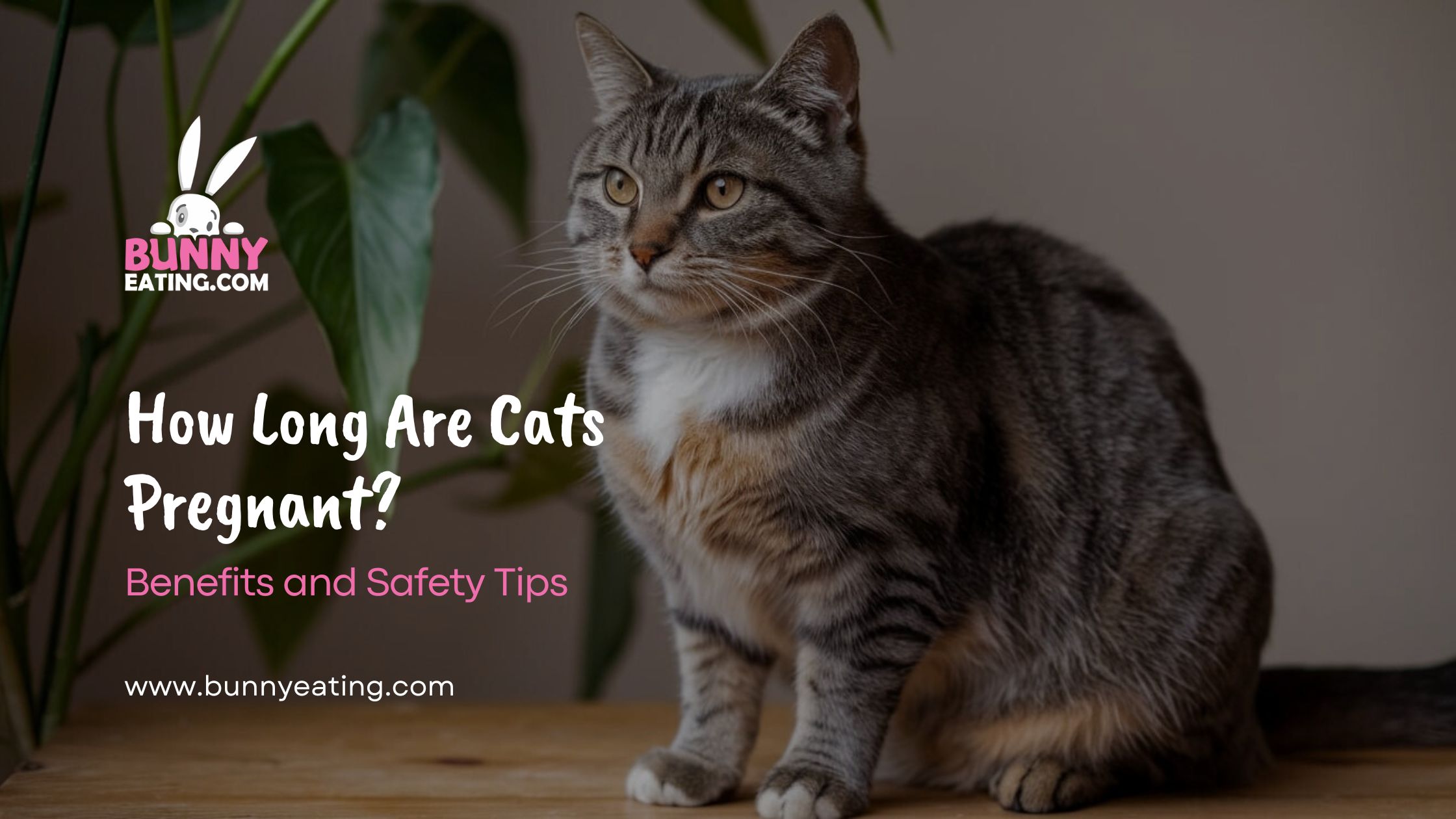How long are cats pregnant? Cats are typically pregnant for about 63 to 67 days. This period is known as the gestation period. It starts from the time they conceive until they give birth.
Curious about what happens during those weeks? Understanding the stages of a cat’s pregnancy can help you prepare for the arrival of kittens. The journey is fascinating and full of changes. How Long Are Cats Pregnant?
During the pregnancy, your cat’s body goes through many transformations. You’ll notice physical and behavioral changes as the weeks progress. Knowing how long cats are pregnant can help you care for your cat better during this important time.
Cat Pregnancy: How Long Are Cats Pregnant and What Are the Stages?
Understanding cat pregnancy is crucial for ensuring that your pregnant queen is healthy and comfortable throughout her gestation period. Feline pregnancy can be broken down into several stages, each with its unique characteristics and care requirements. The first stage begins with fertilization, where the eggs are fertilized by sperm, leading to the formation of embryos.
This is followed by early pregnancy, where the cat pregnancy symptoms start to appear, such as a swollen abdomen and increased appetite. The mid-pregnancy stage is marked by the noticeable development of the kittens, with the queen cat often showing signs of quickening, or the fetal movement within her womb. Finally, late pregnancy prepares the cat for labor and delivery, where she may exhibit nesting behavior as she gets ready for kitten birth.
Throughout the cat pregnancy timeline, it is essential to monitor your cat’s health closely. Veterinarian cat pregnancy exams, including ultrasound for pregnant cats and X-rays, can help determine the number of kittens in a litter and ensure that everything is progressing smoothly. Knowing the cat due date allows you to prepare for the arrival of the kittens and ensure that your cat has a safe and comfortable cat birthing spot. In this comprehensive guide, we’ll explore each stage of feline gestation and offer practical advice on caring for pregnant cats.
Stages of Feline Pregnancy

Fertilization
Fertilization marks the beginning of feline pregnancy. After a queen cat mates, sperm travels to her ovaries, where it fertilizes the eggs. This process typically occurs within a day or two of mating, but the exact timing can vary based on the cat heat cycle. Once fertilization occurs, the embryos begin to develop and move toward the uterus, where they will implant and grow throughout the cat gestation period.
During this stage, you might not notice any significant changes in your cat’s behavior. However, the process of superfecundation can occur, where a queen cat mates with multiple males, resulting in kittens with different fathers. This can affect the cat litter size and the diversity of the kittens born.
Early Pregnancy (1-3 Weeks)
In the early pregnancy stage, which spans the first three weeks, your queen cat may start to exhibit pregnant cat symptoms. Common signs include morning sickness and pinking up, where the cat’s nipples become more prominent and pink due to increased blood flow. Additionally, you may notice a slight swollen abdomen as the embryos begin to grow.
During this time, it’s important to provide proper prenatal care for your cat. Feeding her a high-calorie diet designed for pregnant cats can help support the growing embryos. Regular vet examinations are crucial to ensure the pregnancy is progressing normally and to monitor for any potential complications, such as feline pseudopregnancy, where a cat exhibits pregnancy symptoms without actually being pregnant.
Mid Pregnancy (4-6 Weeks)
Mid pregnancy is a crucial stage in the cat pregnancy timeline. By the fourth week, the kittens are developing rapidly, and you might notice your cat’s belly becoming more rounded and firm. This is also when quickening, or cat fetal movement, can be felt. The queen cat will likely have a more noticeable increase in appetite as she needs more nutrients to support her growing kittens.
As your cat enters the mid-pregnancy stage, it’s essential to continue providing high-quality food and maintaining regular vet visits. An ultrasound for pregnant cats at this stage can confirm the number of kittens and their health status. It’s also a good time to start preparing a cat birthing nest in a quiet, safe spot where your cat can feel secure as she approaches kitten delivery.
Late Pregnancy (7-9 Weeks)
In the final weeks of feline gestation, your queen cat will prepare for labor and delivery. The kittens will be fully developed by the ninth week, and you might notice cat labor signs such as increased restlessness and nesting behavior. Your cat may seek out a comfortable, private area to give birth, so make sure her cat birthing spot is ready with soft bedding and easy access to food and water.
Cat labor typically consists of three stages: the dilation of the cervix, the birth of the kittens, and the delivery of the placenta. It’s essential to monitor your cat closely during this time and know the signs of cat labor so you can provide assistance if needed. If the labor process seems prolonged or if your cat is in distress, seek veterinary help immediately. Feline contractions can vary in intensity, but it’s crucial to ensure a safe and smooth kitten delivery.
Signs of Early Labor

Recognizing the signs of early labor is vital for ensuring the well-being of both the queen cat and her kittens. Common indicators include restlessness, excessive grooming, and cat nesting behavior. Your cat may start to vocalize more frequently and show signs of discomfort as she prepares to give birth. It’s essential to keep a close eye on your cat during this time and ensure that she has a safe, quiet place to deliver her kittens.
Labor and Delivery
When it comes to labor and delivery, every queen cat is different. Some may breeze through the process with minimal intervention, while others might need a bit more help. The key stages of cat labor include the onset of contractions, the delivery of the kittens, and the passing of the placenta. It’s important to remain calm and supportive during this time.
Having your veterinarian’s contact information handy is always a good idea, just in case complications arise. After delivery, make sure your queen cat and her newborn kittens are comfortable and warm. Proper postpartum care is essential for the mother’s recovery and the kittens’ health.
Understanding the Cat Gestation Period
How Long Are Cats Pregnant?
The question “how long are cats pregnant?” is a common one for new cat owners. The cat gestation period typically lasts between 63 and 65 days, which is about nine weeks. However, the length of a cat pregnancy can vary slightly depending on factors like the cat’s breed, age, and overall health. During this time, the queen cat undergoes significant physical and hormonal changes as she prepares to give birth to her kittens.
Understanding the cat gestation period is crucial for preparing for the arrival of kittens. Regular veterinary check-ups, including ultrasounds and X-rays, can help monitor the progress of the pregnancy and ensure that the kittens are developing properly. Knowing the cat due date also allows you to make the necessary preparations for the birth, ensuring that both the mother and her kittens have the best possible start.
How Long Is a Cat Pregnancy in Weeks and Months?
A cat pregnancy lasts approximately nine weeks, or just over two months. Breaking it down further, the first three weeks encompass early pregnancy, where the pregnant cat symptoms begin to appear. Weeks four to six are considered mid-pregnancy, where the kittens grow rapidly, and the queen cat starts to show more noticeable physical changes. Finally, late pregnancy occurs in weeks seven to nine, as the cat prepares for labor and delivery.
Understanding the cat pregnancy timeline is important for monitoring your cat’s health and ensuring that she receives the care she needs at each stage. Regular veterinary visits and a proper diet are crucial throughout the feline gestation period to support both the mother and her developing kittens.
How Many Kittens Can a Pregnant Cat Have?
The average cat litter size typically ranges from four to six kittens, but it can vary widely depending on factors such as the queen cat’s breed, age, and health. Some cats may have as few as one or two kittens, while others might have eight or more. It’s not uncommon for a queen cat to give birth to a larger litter, especially if she has mated with multiple toms, a phenomenon known as superfecundation.
Knowing the number of kittens in a litter is important for planning the birth and ensuring that you have enough resources to care for all the kittens. Regular ultrasounds and X-rays during the feline gestation period can help determine the cat litter size and identify any potential complications that may arise during the birth.
Caring for a Pregnant Cat
Identifying Pregnancy: Is My Cat Pregnant?
One of the first questions cat owners often ask is, “Is my cat pregnant?” The early signs of cat pregnancy can be subtle but include increased appetite, swollen nipples, and a more swollen abdomen. Additionally, a pregnant queen may exhibit changes in behavior, such as being more affectionate or seeking out quiet, comfortable spots to rest.
If you suspect your cat is pregnant, it’s essential to take her to the vet for a cat pregnancy confirmation. Ultrasounds and X-rays are common methods used by veterinarians to confirm pregnancy and determine the cat gestation stage. These examinations also help identify the number of kittens and ensure that the pregnancy is progressing normally.
At What Age Can a Cat Get Pregnant?

Cats can become pregnant as early as five months old, as this is when they typically reach sexual maturity and enter their first estrus cycle, or heat cycle. Unspayed female cats that are not kept indoors are at risk of becoming pregnant at a very young age, which can lead to complications due to their small size and immaturity. Early pregnancy in cats is not ideal, as it can strain the young cat’s body and lead to health issues for both the mother and her kittens.
To prevent early and unintended pregnancies, it’s important to spay your cat once she reaches the appropriate age. Spaying a cat not only prevents pregnancy but also offers significant health benefits, such as reducing the risk of certain cancers and eliminating the possibility of feline pseudopregnancy.
How To Tell if a Cat Is Pregnant
Detecting cat pregnancy can be challenging in the early stages, but there are several signs to look out for. Swollen nipples, also known as pinking up, are one of the first indicators of pregnancy. As the pregnancy progresses, your cat’s belly will begin to swell, and you may notice her becoming more affectionate or nesting. Increased appetite and weight gain are also common as the cat’s body prepares to support the growing kittens.
If you suspect your cat is pregnant, it’s important to visit the vet for a pregnancy confirmation. Ultrasounds can detect pregnancy as early as two to three weeks, while X-rays are typically used later in the cat pregnancy timeline to count the kittens and assess their development.
How Far Along Is My Cat?
Determining how far along your cat is in her pregnancy can help you prepare for the kitten birth. Veterinarians use various methods, including ultrasounds and X-rays, to estimate the stage of pregnancy.
You can also observe physical changes and feline maternal behavior to gauge how close your cat is to giving birth. For example, by mid-pregnancy, you may notice fetal movement, or quickening, as the kittens grow and become more active inside the womb.
Knowing the cat pregnancy duration and being aware of cat labor signs can help you prepare for the upcoming birth. As your cat approaches her due date, keep a close eye on her behavior and ensure that her birthing nest is ready.
What To Feed a Pregnant Cat
Nutrition plays a crucial role in supporting a healthy pregnancy. Feeding a pregnant cat a high-calorie diet specifically formulated for pregnant or nursing cats ensures that she gets the necessary nutrients to support both her and her kittens. Kitten food for pregnant cats is often recommended due to its higher protein and fat content, which helps meet the increased energy demands of pregnancy.
It’s also important to provide small, frequent meals throughout the day, as the queen cat may not be able to eat large meals due to the pressure of the growing kittens on her stomach.
Always ensure that fresh water is available, and consult your vet about any necessary supplements or vitamins. Proper prenatal care also includes monitoring your cat’s weight gain and adjusting her diet as needed to avoid excessive weight gain, which can lead to complications during kitten delivery.
Vaccinations and Parasite Prevention
Cat vaccinations during pregnancy are a delicate matter. While some vaccines are safe to administer during pregnancy, others should be avoided due to the potential risk to the developing kittens. It’s crucial to discuss your cat’s vaccination schedule with your vet before breeding or if you suspect your cat is pregnant. Maintaining up-to-date vaccinations before pregnancy is ideal to ensure both the mother and kittens are protected from diseases.
Parasite prevention for cats is also essential during pregnancy. Fleas, ticks, and worms can be harmful to both the mother and her kittens, so it’s important to use safe and effective parasite control measures. However, not all flea and worm treatments are safe for pregnant cats, so always consult your veterinarian before administering any medication.
Dealing with Illness in Pregnant Cats
During pregnancy, your queen cat is more vulnerable to certain illnesses that can affect both her health and the health of her kittens. Common illnesses include respiratory infections, urinary tract infections, and nutritional deficiencies. It’s important to monitor your cat for any signs of illness, such as lethargy, loss of appetite, or unusual behavior, and seek veterinary care immediately if you notice any symptoms.
Treatment options for pregnant cats are often limited, as many medications can pose a risk to the developing kittens. Your veterinarian will carefully weigh the benefits and risks of any treatment and may recommend supportive care, such as hydration and nutritional supplements, to help manage the illness without compromising the pregnancy.
Preparing for the Big Day
Preparing for Labor and Delivery
As your cat’s due date approaches, it’s important to prepare for the big day when the kittens will arrive. Setting up a cat birthing nest in a quiet, warm, and safe area of your home is crucial. The birthing area should be lined with soft blankets or towels to provide comfort and warmth. Make sure the nest is in a location where your cat feels secure, away from household noise and other pets.
You should also gather essential supplies, such as clean towels, gloves, and a heating pad, to help keep the newborn kittens warm after birth. Having a veterinarian’s contact information on hand is important in case any complications arise during cat labor.
What To Expect During Labor
Cat labor typically begins with mild contractions, which gradually become stronger as the cat’s body prepares to deliver the kittens. Cat labor stages include the dilation of the cervix, the birth of the kittens, and the expulsion of the placenta. Each kitten is usually born about 30 to 60 minutes apart, but it’s not uncommon for there to be a longer gap between some kittens.
It’s important to remain calm and monitor the situation closely. Most cats handle kitten delivery on their own, but if your cat seems to be struggling or if more than two hours pass between kittens, it’s time to call your veterinarian.
After each kitten is born, the mother will clean them and stimulate their breathing by licking them. Ensure that each kitten begins nursing as soon as possible to receive the important colostrum from the mother’s milk.
Tips for Helping Your Cat Give Birth

While most cats do not need assistance during kitten delivery, there are a few ways you can help ensure a smooth birth. First, provide a calm and stress-free environment. Too much noise or activity can cause stress, which might delay labor. Make sure the birthing area is comfortable and warm, and give your cat space, but be ready to step in if needed.
If your cat is in distress or labor seems to be taking too long, contact your vet immediately. Sometimes, a kitten may become stuck during delivery, requiring gentle assistance. Always wear gloves if you need to help, and be very careful not to pull on the kitten, as this can cause injury. After all the kittens are born, monitor the queen cat and her kittens closely to ensure they are all healthy and comfortable.
Why Consider Spaying Your Cat?
Health Benefits of Spaying
Spaying a cat offers numerous health benefits, both for the queen cat and her owners. By preventing pregnancy, spaying eliminates the risk of complications associated with pregnancy and birth, such as infections, difficult deliveries, and the stress of caring for multiple litters. Additionally, spaying reduces the risk of certain cancers, such as mammary and ovarian cancer, and prevents the development of uterine infections like pyometra, which can be life-threatening.
Spaying also helps manage the feline heat cycle, reducing the behaviors associated with a cat in heat, such as yowling, restlessness, and marking territory. These behaviors can be challenging for cat owners and may lead to frustration and a higher likelihood of the cat escaping and becoming pregnant unintentionally.
Preventing Cat Homelessness
Preventing cat homelessness is another significant reason to consider spaying your cat. Every year, millions of cats end up in shelters or on the streets due to overpopulation. By spaying your cat, you help reduce the number of unwanted kittens that may end up in shelters or face uncertain futures.
Spaying and neutering cats is one of the most effective ways to control the cat population and prevent the suffering of countless animals. It’s an act of responsibility that benefits not only your cat but the broader community as well. If you’re unsure about spaying your cat, consider the long-term benefits for her health and well-being, as well as the positive impact on reducing cat overpopulation.
Additional Resources on Cat Health
Common Cat Health Problems
Understanding and addressing common cat health problems is essential for any cat owner. From dental issues to obesity, cats can suffer from a variety of health concerns that require attention and care. Regular veterinary check-ups are crucial for early detection and treatment of these issues. Ensuring your cat receives the proper vaccinations, a balanced diet, and regular exercise can go a long way in preventing common health problems.
The Importance of Regular Vet Visits
Regular vet visits are vital for maintaining your cat’s health. These visits allow for the early detection of potential health issues, the administration of necessary vaccinations, and the monitoring of your cat’s overall well-being.
Your vet can provide valuable advice on diet, exercise, and preventive care, helping your cat live a long, healthy life. Don’t wait until your cat is sick to see the vet—schedule regular check-ups to keep your feline friend in the best possible health.
Conclusion
Understanding how long cats are pregnant helps in taking better care of your cat during this time. A cat is pregnant for about 63 to 67 days. During these days, her body changes a lot, and she needs extra care. By knowing the stages of pregnancy, you can help make sure she stays healthy.
Caring for a pregnant cat means giving her the right food, a safe place to rest, and regular check-ups with the vet. You also need to be ready for when she gives birth. By knowing how long cats are pregnant, you can prepare for the kittens’ arrival and support your cat through this important time.
FAQs
How many months is a cat pregnant?
A cat is pregnant for about two months. This period usually lasts between 63 to 67 days, which equals roughly nine weeks.
How can you tell how far along a cat is?
You can tell how far along a cat is by her belly size, feeling for kitten movement after four weeks, and through a vet’s ultrasound or X-ray.
How can you tell when a cat is about to give birth?
Signs include nesting behavior, restlessness, a drop in body temperature, and frequent licking of the genital area.
How many kittens will my cat have for the first time?
A first-time cat mother typically has 3 to 5 kittens, though it can vary depending on her age and health.

Aledon is the author at Bunny Eating, specializing in pets. With a deep understanding of pet breeds, behavior, food, and health, Aledon provides expert advice and valuable insights to help you care for your furry friends.











